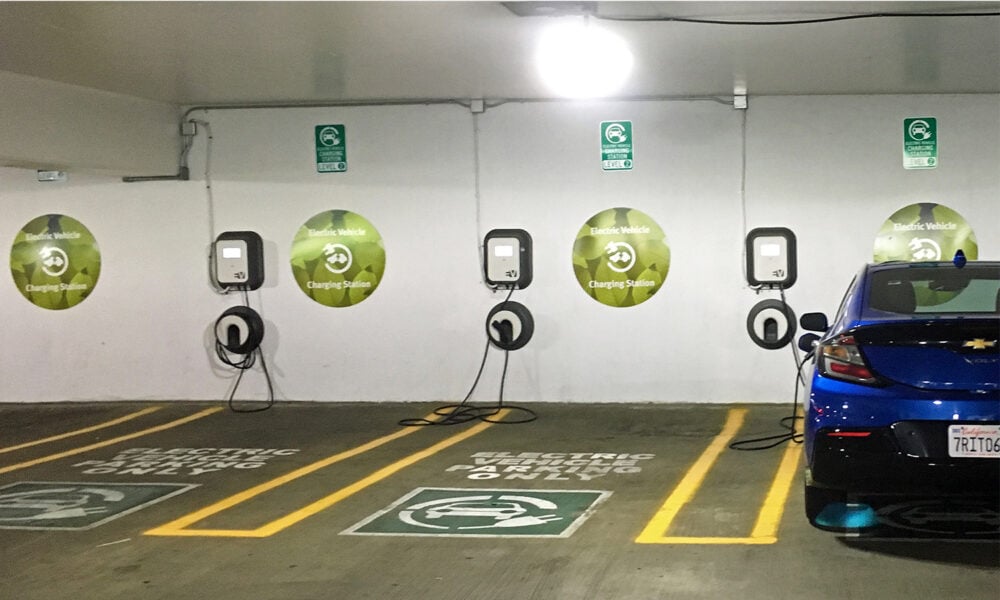The Inflation Reduction Act (IRA) contains a tax credit that can be used for electric vehicle charging infrastructure. You might have missed it because its name is a bit wordy and doesn’t contain the words “electric” or “charging.” The credit is called the Alternative Fuel Vehicle Refueling Property Credit. Basically, that translates to a credit for businesses or individuals investing in infrastructure that is used to refuel vehicles that run on certain so-called alternative fuels, a category that includes electricity. I’ll call it the alternative fuel infrastructure tax credit for short.
Why now and why in 2032?
The alternative fuel infrastructure credit has been around for a while, through several rounds of expiration and extension. The most recent extension expired at the end of 2021. The on-and-off nature of the credit’s availability made it difficult for some individuals and business charging installers to count on it. This credit is important to have now and reliably for the coming years because it is one of the tools in our toolbox to accelerate the decarbonization of the transportation sector—a necessary step to limit global warming and prevent climate catastrophe. Electric cars, trucks, and buses are a key technology to reduce climate-warming emissions as well as health-harming local air pollution, and those vehicles need readily available charging infrastructure. We need federal support for electric vehicle charging, as well as additional policies at all levels to increase the deployment of zero-emission vehicles and to reduce the need for driving and hauling goods.
What’s new?
There are some important changes to this credit from the former version that are worth noting, and it is exciting to see that some of the updates reflect changes that UCS has advocated for quite some time. Five key changes in the credit of note include:
1. Long term certainty. The updated alternative fuel infrastructure credit runs the credit through the end of 2032, meaning the credit will provide reliable, longer term support for charging infrastructure. Certainty in the availability of the credit is something that has been lacking recently. The commitment to ten years of this tax credit will go a long way to accelerating and sustaining the transition to electric vehicles over the next decade.
2. Increased business cap. The updated to the credit clarifies that it applies to each single item of qualified refueling property (e.g., each charger) and adjusted the maximum amount of the credit for business property. The credit for chargers installed for business purposes is six percent of the property’s cost (30 percent if certain requirements are met, see number five below), and the cap has been increased to $100,000 per item. The increased dollar cap means the credit can provide more meaningful for direct current fast charging, whose speed is needed to serve drivers traveling long distances and heavy trucks that have very large batteries. Meanwhile, the credit for drivers installing chargers at home remains the same at 30 percent, with a limit of $1,000 per item.
3. Bidirectional chargers and chargers for 2- and 3-wheeled EVs qualify. The updated credit to explicitly allow bidirectional charging equipment as a qualified kind of infrastructure for the credit. This is important because it encourages charging operators to consider bidirectional charging so that vehicles can have the opportunity to export power to an on-site load or to the electric grid. Those opportunities are critical to allow vehicles to provide back-up power to sites or to support the stable operation of the grid, including the integration of renewable energy. Notably, participating in grid-support can be a revenue-generating opportunity for drivers and charging operators. The update also includes eligibility for infrastructure serving two- and three-wheeled electric vehicles that operate on public roads giving drivers more options in choosing a vehicle that serves their needs.
4. Targeting support to low-income and rural areas. The credit update adds an eligibility requirement that charging infrastructure must be located in low-income or non-urban census tracts. Hopefully, this condition of the tax credit will target those who need charging infrastructure support most. Still, limiting the location of charging infrastructure to low-income and non-urban areas is not a perfect proxy for addressing the charging needs of drivers who live in those areas, or for electrifying commercial vehicles operating in those areas, say a delivery truck delivering packages to a specific neighborhood. A nearby charging station may be financially inaccessible to drivers due to high cost of charging if the station is built with only high power fast charging. High powered fast charging costs more to install and operate, and it is typically priced higher to cover high costs. In addition, limiting payment options to memberships or certain kinds of card readers may also exclude some drivers, particularly those that are un- and underbanked. On the commercial vehicle side, vehicles that drive most of their miles in low-income or non-urban areas may charge in a depot that is outside of those eligible areas. Care will need to be taken to ensure those cases are supported by other policies and programs so that drivers in those circumstances are not left behind in the transition to electric.
5. Supporting a highly trained workforce. The IRA revision adds prevailing wage and apprenticeship requirements that give a multiplier to the amount of the credit for qualified projects installed as business property. Attaching those wage and apprenticeship provisions to an increased credit amount can help create a pipeline of highly trained workers and encourage higher wages that can attract high-road contractors, create economic benefits for communities, and more.
The big picture
As noted above, the alternative fuel infrastructure credit is just one tool in our collective toolbox to address climate-warming emissions and local air pollution. Taken together with electric car and commercial truck tax credits, other complementary provisions of the IRA, as well as investments in electric vehicle charging, electric transit and school buses, and more from the Infrastructure Investment and Jobs Act; federal policy has set up the transportation sector to take leaps and bounds forward, toward the electrified future we must reach as quickly as possible.

